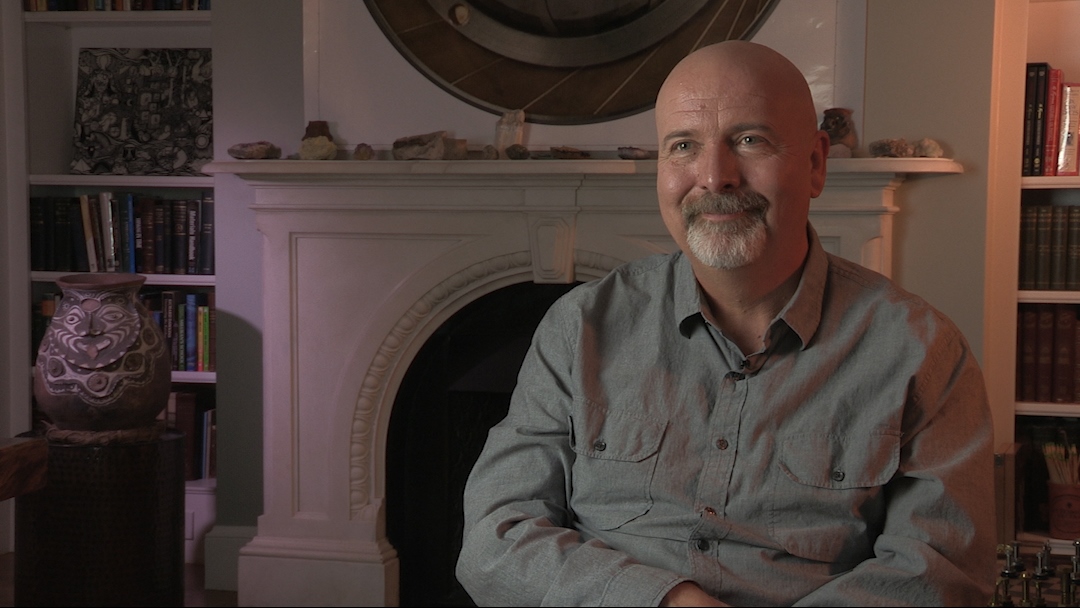NEXT STORY

Landing 'mixmaster blong jesus' in Kanganaman
RELATED STORIES

NEXT STORY

Landing 'mixmaster blong jesus' in Kanganaman
RELATED STORIES


|
Views | Duration | |
|---|---|---|---|
| 41. Reunited with my driver, Pratap | 110 | 02:40 | |
| 42. 'Dependence' and Twist – American culture in Africa | 115 | 01:13 | |
| 43. My trip to Papua New Guinea | 111 | 02:51 | |
| 44. In search of Kanganaman, the lost village | 107 | 02:20 | |
| 45. Landing 'mixmaster blong jesus' in Kanganaman | 105 | 03:01 | |
| 46. A trial in the village | 98 | 03:45 | |
| 47. Finding the village, the pots and the lost world | 93 | 03:31 | |
| 48. Possessing things is not a natural state for humans | 109 | 03:53 | |
| 49. 'Your job is just to be human' | 119 | 02:07 | |
| 50. Chasing a plane in a caravan of rickshaws | 97 | 05:29 |


When we'd first arrived, we'd gone to the national museum, and we'd seen this extraordinary pot. And I fell in love with this pot and asked where it was, and the director of the museum said, 'Oh, that's a village that, you know, we've lost contact with, you can't...' I was like, 'I want to get one of these pots.' He was like, 'You can't. It's, you know, it's a village that's disappeared and we don't, you know, we know the name of it but nobody's visited it for a long time.'
And Courtney, who I was with, if you tell her she can't do something, that's like red meat for her. So she's like, 'Okay, well we're going to find that village.' So the museum director who was Oxford educated agreed to come with us, to go on the search for the village. And he agreed to take us by his village. Which was a village called Kanganaman. And so we made friends with him and he showed us his crocodile scars because he was an initiate of the village and at the village one of the initiations that they do for men who choose to become initiates is they cut their skin, they scarify their skin, and they rub mud into it. And they keep cutting them until they pass out. And then they rub them with blood and they keep them awake for days and days and it creates these scars that look like crocodile scales. And crocodiles figure very big in their religion. So he showed us his crocodile scales. Lifted off... This is this Oxford educated museum director. And so he said, 'I'd love to go back to my village.' And so it turned out he was a fantastic guide. So we sailed up the Sepik River, and the maps were all wrong.
W Daniel Hillis (b. 1956) is an American inventor, scientist, author and engineer. While doing his doctoral work at MIT under artificial intelligence pioneer, Marvin Minsky, he invented the concept of parallel computers, that is now the basis for most supercomputers. He also co-founded the famous parallel computing company, Thinking Machines, in 1983 which marked a new era in computing. In 1996, Hillis left MIT for California, where he spent time leading Disney’s Imagineers. He developed new technologies and business strategies for Disney's theme parks, television, motion pictures, Internet and consumer product businesses. More recently, Hillis co-founded an engineering and design company, Applied Minds, and several start-ups, among them Applied Proteomics in San Diego, MetaWeb Technologies (acquired by Google) in San Francisco, and his current passion, Applied Invention in Cambridge, MA, which 'partners with clients to create innovative products and services'. He holds over 100 US patents, covering parallel computers, disk arrays, forgery prevention methods, and various electronic and mechanical devices (including a 10,000-year mechanical clock), and has recently moved into working on problems in medicine. In recognition of his work Hillis has won many awards, including the Dan David Prize.
Title: In search of Kanganaman, the lost village
Listeners: George Dyson Christopher Sykes
Christopher Sykes is an independent documentary producer who has made a number of films about science and scientists for BBC TV, Channel Four, and PBS.
Tags: Papua New Guinea, Kanganaman
Duration: 2 minutes, 20 seconds
Date story recorded: October 2016
Date story went live: 08 August 2017